Electric heating: how to heat an apartment without using gas
Taking into account the increasing prices of centralized heating and gas supply every month, an increasing number of people equip alternative microclimate maintenance systems at home. These include autonomous electric heating.
Such a solution is not yet widely spread, but it has many advantages, which will be discussed below.

Arrangement of electric heating system
Before you begin to design electric heating in an apartment or a private house, you must decide on the choice of one or another of the existing systems. Each of them has its advantages and disadvantages, as well as many different technical parameters that in the future have a significant impact on the cost and ease of operation.
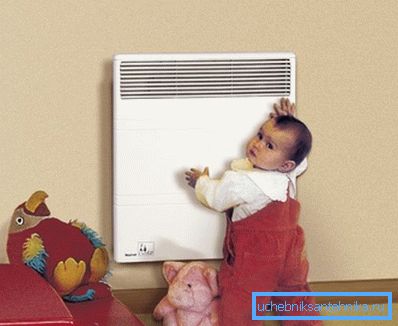
Modern climatic equipment distinguishes between the price, design features and power.
Tip! It is better to entrust all the necessary engineering calculations to an organization that specializes in installing such systems. Its staff will also help with the decision on how to legalize electric heating, prepare the documents necessary to obtain permission to operate the finished system.
So, we will consider the existing types of electric heating in more detail.
Varieties of electric climate systems
Electric heating of the apartment can be equipped with the following systems:
- Heated floors, powered by electricity. Their installation does not cause any special difficulties. For this purpose, special cables or mats, laid under the decorative coating, which covers the base, can be used.
Such climate control systems heat the room very efficiently. After a short time after switching on, the temperature in the room will rise to an acceptable level. The disadvantage is a small inertia. The floor can not accumulate heat, because immediately after turning off the room temperature will begin to fall sharply.
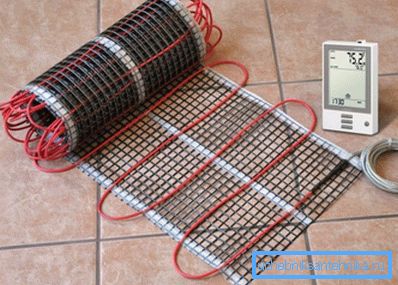
- Water heating, where for heating the coolant used electric heating boilers - Evan, Kospel, Galan and so on. All modern models of equipment are quite economical, reliable and easy to operate.
The only requirement is the correct calculation of electric heating, which will allow you to purchase and install a unit of the required power. This will allow not only to provide a comfortable microclimate in the home, but also to more optimally use the electricity that an electric heating boiler consumes.
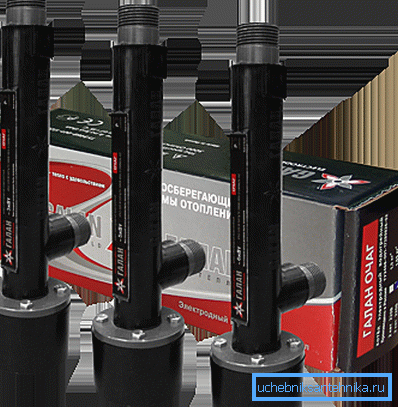
- The climate system, the main element of which is the heat pump. This is the most modern and progressive electric heating installation, which allows providing small houses with heat and hot water at minimal cost.
Installation instructions for such equipment are too complicated for self-realization. Therefore, if you decide to opt for this type of heating system, it is recommended to seek help from specialists.
- Electric heating panels, convectors and other similar devices. The basis of their operation is the principle of heating the ambient air with heaters of various designs.
To install them do not require permission or any special skills. It is enough to buy electric heating devices you like and install them in the right place (or hang on the wall). After that, you just need to plug in the power outlet and enjoy the heat.

Tip! One of the most economical and aesthetic solutions currently are ceramic panels Venice, equipped with infrared heaters. They effectively heat the rooms, consume little electricity, have a long service life and, thanks to modern design and various color solutions, organically complement the interior of any home.
The benefits of using electricity for heating
Electric energy is becoming increasingly popular as an energy carrier for arranging heating of apartments and private houses.
This is not surprising, as compared with other equipment for climate control, electric heating systems have many undeniable advantages:
- Efficiency. Given the significant increase in the cost of alternative energy carriers (gas, coal, diesel, etc.), electricity is no longer the most expensive source of energy, therefore the installation of such a climate system can be considered quite justified.
- Efficiency. With correctly performed calculations of the power of the boilers used or convectors, the electric heating system will be as productive as possible. Even in severe frost, the equipment will make it possible to warm the room to a comfortable temperature in a matter of hours.

- Diversity. Modern industry produces a huge amount of various equipment that can be installed in rooms of any size and configuration. In addition, you can choose and buy a model that is ideally suited to you both in price and in power. Due to this, it will not be necessary to overpay for over-consumed electricity.
- Aesthetics. Manufacturers pay considerable attention not only to the technical characteristics, but also to the appearance of the products. The sophisticated appearance of electric heaters, the variety of colors and shapes will satisfy the taste of even the most captious buyer.
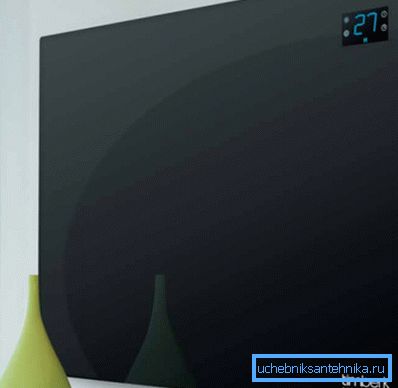
Installation procedure for electric convectors
The simplest and fastest way of arranging electric heating is the use of separate heating panels and convectors. Choosing this system, you will be spared the need to install boilers, pipelines, radiators, and so on. In addition, the operation is simplified, since the heating of the rooms does not require filling the system with coolant.
Note! There are convectors that can be controlled from one console, where the desired temperature is set, as well as operating modes. So you can more effectively manage the microclimate in the house.
The installation process itself will not cause difficulties even for a novice master who does not have skills in plumbing:
- First of all, you should study the technical documentation, in which are indicated and recommendations regarding the place and method of installation. You also need to read the safety requirements. This will help avoid future accidents. In addition, the service life of the electric heater you purchased depends on compliance with the requirements specified in the instructions.

- Installation of the convector can be carried out on the wall or floor. To do this, you must purchase the desired model in advance. There are also universal devices that, by means of brackets, can be mounted on legs or attached to a vertical plane.
- Electric convectors should not be installed under the air intake valves, blinds, curtains, and so on. The minimum distance to the floor and side walls (when installed in the corner) should be more than 120 cm. Leave an empty space in front of the front and top panels at least 50 cm wide. The distance from the convector to the electrical outlet is 30 cm, otherwise the latter may melt from heat
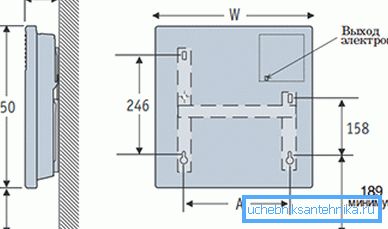
- For fixing, self-tapping screws with dowels or anchor bolts are used. It is advisable to use the brackets and clamps that are included in the package. They are designed to withstand the weight of the hanging equipment.
- Before drilling, you need to make a preliminary markup. When hanging massive convectors, it is advisable to use the help of a partner. So you protect yourself from injury, and equipment from damage.
- Connect the device to electricity only at the end of all procedures related to installation. On turning on the device will indicate a lit indicator light. Modes of operation are selected according to the instructions attached to the convector.
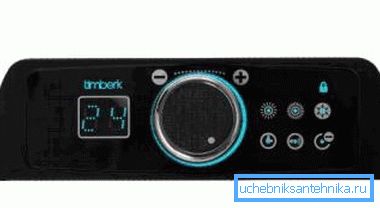
Conclusion
Electric heating with your own hands is not a fantasy, but an objective reality, which you could verify for yourself by reading the information offered to your attention. And although in most cases this is not the most economical solution, sometimes it may be the only possible one.
You can learn more about the use of alternative energy carriers from the video posted here.